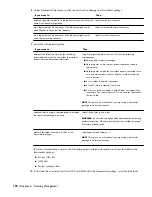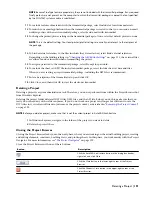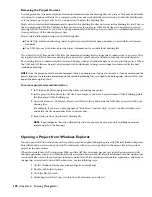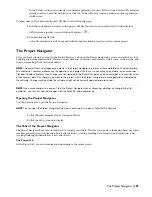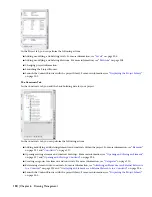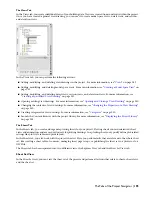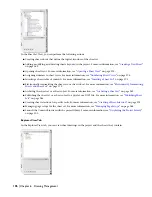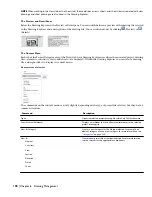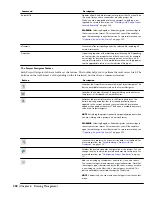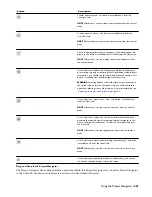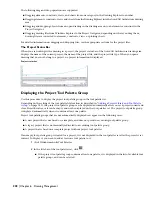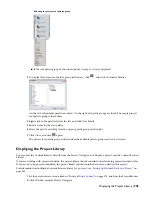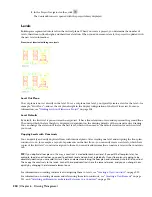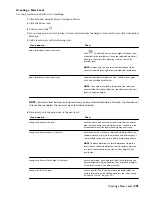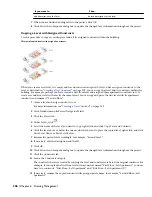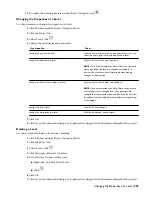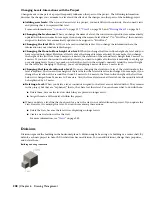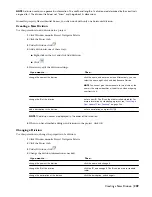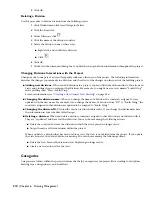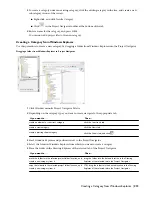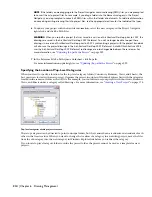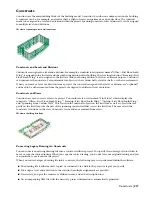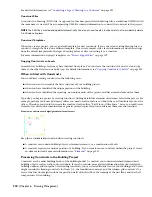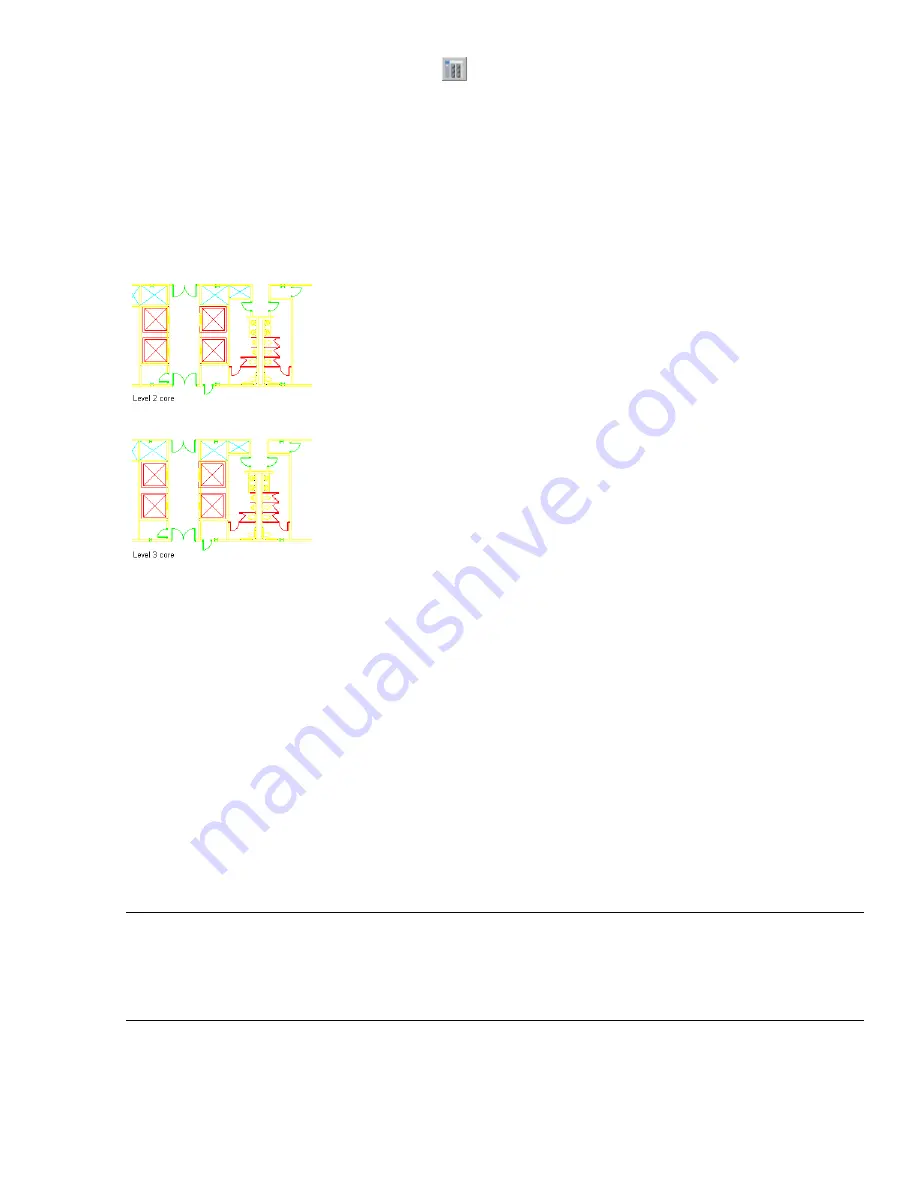
3
In the Project Navigator toolbar, click
.
The Content Browser is opened with the project library displayed.
Levels
Buildings are segmented into levels in the vertical plane. When you create a project, you determine the number of
levels, their floor-to-floor height, and their floor elevation. When you add or remove levels, the project is updated with
the new level information.
Plan view of identical building core levels
Level Cut Plane
The cut plane is not set directly in the level. To set a cut plane for a level, you typically create a view for the level—for
example, “First Floor”—and set the cut plane height in the display configuration of the First Floor view. For more
information, see “
Working with Cut Planes in a Project
” on page 308.
Level Defaults
By default, the first level is present in each new project. It has a floor elevation of zero and represents the ground floor.
The unit in which the level height is displayed is dependent on the drawing defaults of the currently active drawing.
You can change the elevation value for the first level, which is then used as the default elevation for each new level
you insert.
Copying Levels with Constructs
You can quickly and easily duplicate floors with identical plans. After creating one level and assigning the floor plan
constructs to it—for example, a layout of apartments on the first floor—you can easily create new levels, which have
copies of the first level’s constructs assigned to them. You can edit and rename these constructs later in the Constructs
tab.
TIP If you duplicate floor plans in this way, a construct is created for each new level. If you edit the floor plan later, for
example, to add an extra door, you need to edit each level and construct individually. If your floor plans are going to be
absolutely identical, you can avoid this task. Create an element containing the floor plan, and reference it into the first construct.
Then copy the constructs to the levels. Each of the copied constructs have the same reference, and you can change them
quickly by changing the referenced element once.
For information on creating constructs and assigning them to levels, see “
Creating a New Construct
” on page 219.
For information on creating elements and referencing them into constructs, see “
Creating a New Element
” on page
233, and “
Attaching an Element as an External Reference to a Construct
” on page 225.
204 | Chapter 6 Drawing Management
Summary of Contents for 00128-051462-9310 - AUTOCAD 2008 COMM UPG FRM 2005 DVD
Page 1: ...AutoCAD Architecture 2008 User s Guide 2007 ...
Page 4: ...1 2 3 4 5 6 7 8 9 10 ...
Page 40: ...xl Contents ...
Page 41: ...Workflow and User Interface 1 1 ...
Page 42: ...2 Chapter 1 Workflow and User Interface ...
Page 146: ...106 Chapter 3 Content Browser ...
Page 164: ...124 Chapter 4 Creating and Saving Drawings ...
Page 370: ...330 Chapter 6 Drawing Management ...
Page 440: ...400 Chapter 8 Drawing Compare ...
Page 528: ...488 Chapter 10 Display System ...
Page 540: ...500 Chapter 11 Style Manager ...
Page 612: ...572 Chapter 13 Content Creation Guidelines ...
Page 613: ...Conceptual Design 2 573 ...
Page 614: ...574 Chapter 14 Conceptual Design ...
Page 678: ...638 Chapter 16 ObjectViewer ...
Page 683: ...Designing with Architectural Objects 3 643 ...
Page 684: ...644 Chapter 18 Designing with Architectural Objects ...
Page 788: ...748 Chapter 18 Walls ...
Page 942: ...902 Chapter 19 Curtain Walls ...
Page 1042: ...1002 Chapter 21 AEC Polygons ...
Page 1052: ...Changing a door width 1012 Chapter 22 Doors ...
Page 1106: ...Changing a window width 1066 Chapter 23 Windows ...
Page 1172: ...1132 Chapter 24 Openings ...
Page 1226: ...Using grips to change the flight width of a spiral stair run 1186 Chapter 25 Stairs ...
Page 1368: ...Using the Angle grip to edit slab slope 1328 Chapter 28 Slabs and Roof Slabs ...
Page 1491: ...Design Utilities 4 1451 ...
Page 1492: ...1452 Chapter 30 Design Utilities ...
Page 1536: ...1496 Chapter 31 Layout Curves and Grids ...
Page 1564: ...1524 Chapter 32 Grids ...
Page 1611: ...Documentation 5 1571 ...
Page 1612: ...1572 Chapter 36 Documentation ...
Page 1706: ...Stretching a surface opening Moving a surface opening 1666 Chapter 36 Spaces ...
Page 1710: ...Offsetting the edge of a window opening on a freeform space surface 1670 Chapter 36 Spaces ...
Page 1956: ...1916 Chapter 42 Fields ...
Page 2035: ...Properties of a detail callout The Properties of a Callout Tool 1995 ...
Page 2060: ...2020 Chapter 45 Callouts ...
Page 2170: ...2130 Chapter 47 AEC Content and DesignCenter ...
Page 2171: ...Other Utilities 6 2131 ...
Page 2172: ...2132 Chapter 48 Other Utilities ...
Page 2182: ...2142 Chapter 51 Reference AEC Objects ...
Page 2212: ...2172 Chapter 52 Customizing and Adding New Content for Detail Components ...
Page 2217: ...AutoCAD Architecture 2008 Menus 54 2177 ...
Page 2226: ...2186 Chapter 54 AutoCAD Architecture 2008 Menus ...
Page 2268: ...2228 Index ...

